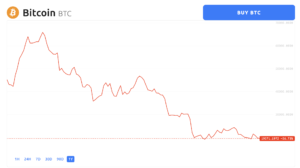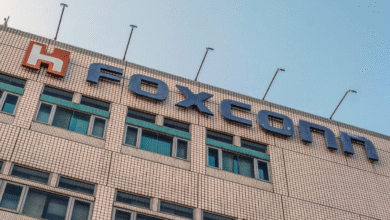Leading Causes of Bitcoin Volatility.

What are the main causes of Bitcoin Volatility.? Here is a guide to some of the variables influencing Bitcoin volatility.
The volatility of bitcoin is the cost it pays for having a small supply and having no central bank. The majority of people view this digital currency as the most erratic cryptocurrency due to its price fluctuations despite having increased fifty times over the previous five years. The price change of this digital asset over time is therefore measured by volatility.
There are a few factors at play in this digital currency’s price history. Let’s examine the numerous factors causing Bitcoin volatility in this article.
Supply and Demand

Read more: The new TvOS 16.1.1 Update Fixes the Issue with Apple TV 128GB Storage.
Similar to any other product that people need, supply and demand have a significant impact on the value of this virtual asset. The accumulation of Bitcoin is essential for quick price changes. Although the digital currency in question is receiving a lot of media attention, its market capitalization is only $1 trillion, or 10% of the market capitalization for gold.
As a result, by purchasing or selling this virtual currency, a single entity or wealthy individual may be able to independently influence the price. In other words, if a sizable holder of this digital currency decides to sell, the currency’s supply will quickly rise significantly.
Bitcoin Is a New Concept
Compared to gold and fiat currencies, which are regarded as stable commodities, people have only recently started using Bitcoin. The digital asset is still searching, so to speak. That explains why, once the early growth issues and competing interests are resolved by investors, users, and the government, the price of the digital currency will fluctuate until it stabilizes, assuming Bitcoin is able to do so.
Additionally, people continue to develop their theories about this currency as the world tries to figure out how this electronic asset will fit into the global economy. As a result, there will be ongoing price fluctuations for this digital currency. You can go to the bitcoin profit platform for more information.
Internal Control
Bitcoin is not governed by a set of rigid guidelines; instead, its developers manage their projects in accordance with the needs of the users. However, investors favour to invest in environments that are steady and difficult to change. However, with Bitcoin, that is not the case. Regular pricing must be ensured in situations where management must be dependable and durable.
The threat of Rival Cryptocurrencies
Every day, a wide variety of cryptocurrencies and new tokens and programmes emerge. Building a network of users for a cryptocurrency is crucial to its development.
Ethereum has been giving Bitcoin some fierce competition. The Chinese government also recently unveiled the “digital Yuan,” a digital currency. However, none of these cryptocurrencies has been able to surpass Bitcoin in terms of usage, adoption, and market capitalization. A new cryptocurrency that enters the market and gains popularity devalues the existing top cryptocurrency, which causes the price of the former to decrease while the new one’s price rises. As a result, the value of Bitcoin is impacted by the development of new cryptocurrencies.
Production Fees
By using a computer to verify the following block on the blockchain, the mining process generates new Bitcoin tokens. The miner receives a reward in the form of a token representing a digital currency at the end of the process.
In general, the mining process requires computing power, necessitating expensive equipment and electricity investments from miners in order to mine Bitcoin. The cost of mining Bitcoin rises as more efficient equipment is needed, which has an impact on how volatile the digital currency is.
Conclusion
The volatility of this digital asset is influenced by all of the aforementioned factors in one way or another. You can succeed as a cryptocurrency trader or investor by understanding how these factors affect Bitcoin volatility.












2 Comments